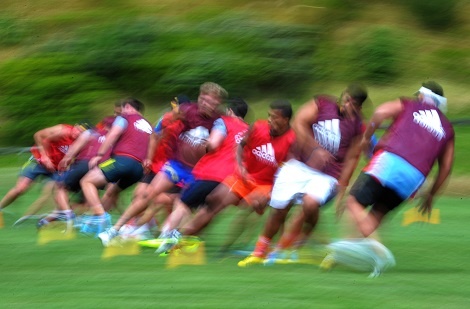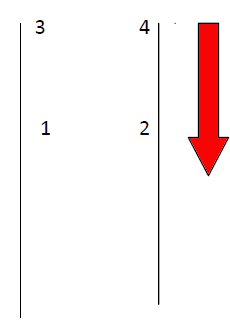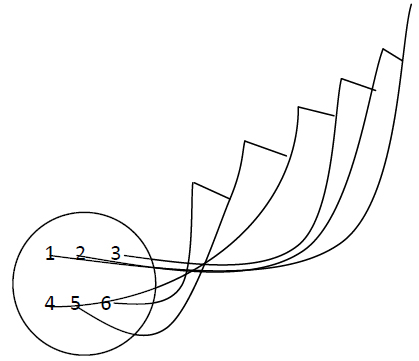- Rugby Toolbox
- Resources & Education
- Learn more
- Articles
- Snook on Coaching
- Pre Season Support Activities
- Ruck & Run Drill
- Playing Philosophy – Ruck & Run Coaching Components
- Playing Philosophy – Spread the Forwards
- Playing Philosophy – A forward behind the ruck
- Playing Philosophy – Ruck & Run
- Playing Philosophy – An idea!
- The Breakdown
- Building Positivity [3]
- Building Positivity [2]
- Building Positivity
- Fitness and Game Related Activities
- Getting the Head Working
- Missiles are Dangerous
- Use of Video
- Winger Attacking Outside First-Five
- Player Profiling
- Selection
- Fitness Away from the Team Session
- Playing Philosophy (Pre season Prep)
- Coaching the Coaches
- The Rugby Coordinator and Pre-Season Preparation
- Why Not Use Tap Penalties More Often?
- Why Kick the Ball Down the Middle of the Field?
- Defending the 5 Metre Lineout Drive
- Scoring from the 5 Metre Lineout
- What are the Kicking Team Aiming to Achieve from Halfway Restart
- Should We Practice Scoring Tries?
- Team Culture
- Looking After Your Players
- Coach Survival Tips
- Under 11/13 – Backline Defence
- Under 11/13 – Ruck Defence
- Under 11/13 – Back Attack
- Under 13 – The Counter Attack
- Under 11/13 – The Maul
- Under 11/13 – Lineouts
- Under 11/13 – Decision Making
- Under 11/13 – Support Play
- Under 11/13 – Dive Pass and More
- Under 11/13 – Drop & Grubber Kick /Highball Catch
- Under 11/13 – Front on Tackling
- Under 11/13 – Contact – Getting Up – The Ruck
- Under 11/13 – The Coaching Session
- Under 8/10 – Using Space
- Under 8/10 – Kicking
- Under 8/10 – Contact and Picking Up the Ball
- U8/U10 Draw & Pass and Sidestep
- Under 8/10 – The Tackle
- Under 8/10 – The Coaching Session
- Under 7 – Test Your Coaching – Support Play
- Tap Pass and Swerve U7
- Ball Familiarisation; Passing & Receiving
- Activities for the Non-Contact Tackle
- Under 7 – The Coaching Session
- Coaching Teenagers – After the Ruck
- Coaching Teenagers – The Practice Session
- Coaching Teenagers – Best Practice
- Coaching Kids – Best Practice
- Plays from a Tap Penalty
- Running Plays from a 5 Man Lineout
- Driving Plays from a 5 Man Lineout
- Strike Plays at the End of the Lineout
- Back Strike Plays at the Lineout
- Wide Strike at the Scrum (2)
- Wide Strike at the Scrum
- Midfield Attack at the Scrum
- No 8 Plays at the Scrum (2)
- No 8 Plays at the Scrum
- The Cut Out Pass
- Skills to Penetrate (2)
- Skills to Penetrate
- Movements to Penetrate
- Patterns to Penetrate
- Contact and Continuity
- Keeping the Ball Alive Out Wide
- Pre Season Support Activities
- Checklist
- Understanding the game
- The Playing Philosophy
- The Lineout
- Overview
- Team Profile
- Start Now!
- Backrow
- Nine and Ten
- Rugby-related Fitness Activities
- The Psychological Edge
- Open Field Play
- Key Performance Indicators
- Improving Team Performance
- Backline Attack Concepts
- Tactics at Phase Play
- Playing Philosophy
- The ‘Stop Focus’
- Kick Attack
- Clearing the 22
- Wide Attack at Phase
- Player Focus
- Scrum Preparation
- Lineout Preparation
- Back Attack Preparation
- Sevens Preparation
- Sevens Kick Offs
- Sevens Scrum and Lineout
- Sevens Attack Patterns
- Sevens Defence
- 7's Selection and Game Planning
- Coaching and Leadership
- How the Game Evolves
- Changing Within the Game
- Learning from the Television.
- Using Tap Penalties Wisely
- Defence Drills
- Defence Drills for Tight Five
- Team Defence and TUB’ing
- Establishing Patterns from the Ruck
- Structured Phase Play
- Structuring Phase Play on the Run
- Coaching Roles
- Structuring a Close in Tackling/Defensive Session
- Coaching in Threes
- Attacking Back Play
- Kick Off Chase
- Wrap Around Back Plays
- Lineout Plans
- Looking and Learning
- Motivating Your Players
- Scrum Attack
- Refocusing the Team
- Monitoring the Progress
- Learning the Game
- Playing to the Laws
- Small is OK
- Decisions After the Tackle
- Improving Your Coaching
- Food for Thought
- More Food for Thought
- Passing & Catching
- How Ireland Nearly Beat the All Blacks
- The Progressive Coach
- Try Something New
- Encouraging Excitement
- The Mental Approach
- Where to Start
- Being the Best You Can Be
- Off the Ball Decisions
- Lineouts Difficult to Master
- Decisions on the Run
- Rucking and Rolling
- A Successful Approach
- Gaining Clarity
- Manipulation vs Physicality
- Beating the Drift
- To Ruck or Not to Ruck
- Stopping the Lineout Drive
- Fine Tuning the Planning
- It's a Running Game
- RugbySmart 2015
- Using the Shoulders
- Loosehead Prop / Tighthead Prop
- Position Specific – Hooker
- Position Specific – Lock
- Position Specific – Blindside Flanker
- Position Specific – Openside Flanker
- Position Specific – No 8
- Position Specific – Halfback
- Position Specific – First Five Eighth
- Position Specific – Second Five Eighth
- Position Specific – Centre Three-quarter
- Position Specific – Wing
- Position Specific – Fullback
Pre Season Support Activities

PRE-SEASON: 1- Rugby related Fitness Activities - Ian Snook
SUPPORT PLAY
Support play activities provide an effective way to incorporate fitness with a specific game related pattern.
The key aspects are understanding the ‘fast-balance-explosive' nature of rugby, and creating support patterns that develop ‘depth, balance on the ball carrier, working hard to get in to space, changes of pace, changes of direction, looking forward in support and with the ball.'
In each pattern the requirements are the same: come from depth on to the ball; burst at pace over the last metre before receiving the pass; burst forward- look forward- commit a defender - change direction if necessary ; create balance by using shorter steps when approaching the tackler; pass; support again.

*1 sprints 3 metres; passes to 2; drops in behind 3; supports behind 3
*2 bursts on to pass from 1; looks forward; gets in to balance; passes back inside to 3 who is bursting on to the ball.
*3 will pass in to 4. 4 will pass in to 1.
Continue this pattern.
Start as unopposed. Introduce a ‘chaser' who starts at least five metres behind three and four. Introduce two tackler's twenty metres apart down the channel. The group must keep operating at full pace. Develop the activity as best suits you. Call it out during team runs so that the team understand when to use this pattern.
2-Bunch Support
Used against a lateral defensive line in a situation created from a quick ruck, targeting the opposition backs as much as possible. It is really important to maintain depth and for the support players to look and choose the best space to enter the attack.
Practice this in an area no more than ten metres wide with five to six players in the attack. Run it for at least fifty metres to gain the fitness benefits.
A player starts by bursting forward, getting in to balance, listening for a call, making the pass to a bursting player, going to ground and doing a press up before joining the support group.
No support player should be closer than a metre to another player. The player in the best position calls for the ball-bursts on-looks forward-commits a tackler with short steps/change of direction, then makes a pass and does his press up. Continue on.
Start unopposed. Introduce a ‘chaser' so that the attack cannot slow down. Introduce one or two defenders. Introduce this in to your patterns during your team run.
Variation: Each player numbers off ‘one through to six'. There is also a number for supporting on the right (1) or supporting on the left (2).
The ball carrier will call two numbers as he gets in to a balanced run ready to pass. If he calls "six-two", the number ‘six' player will burst on his left side to receive the pass. The new ball carrier then calls two numbers. This continues.
3- Fan Support
Used against a bunched defensive line in open play. Particularly effective if you have a number of quick players or very fit players. The aim is to stretch the opposition defence as quickly as possible by continuing the same way.
Practice in an area starting at the corner flag and heading towards a point in the middle of the halfway or towards the fifteen metre line on the opposite side of the field. Four to six players is a good number.
The players start on the ground in a small bunch with the back player getting up and sprinting a few metres forward with the ball. The support group get up and maintain their depth before sprinting on to the ball for a short pass on the outside shoulder. After receiving the pass the player looks forward, may change angle inwards slightly to commit a defender, gets in to balance and pops a pass on the outside shoulder. If the group are fit enough the passer can do a down an up before supporting the attack. Each support player supports to the outside shoulder, bursts on, straightens, gets in to balance, commits a defender, passes...

6 - 5 - 4 - 3 - 2 - 1 - 6 - 5 - 4 …
You can include ‘in passes' every now and then.
4- Chase Support
This is utilized during a game after the ball carrier has penetrated out wide and the support player runs a line that takes him towards the ball carrier. This is crucial as the ball carrier will most times head to space, so the support needs to get him.
Five is a good number for this drill. It can be carried out in the five metre area between the sideline and the 5m line; with cones placed at approximately six metres apart down the five metre line.
The ball carrier starts on the 5m line with the rest of the players lined up behind him. He sprints to the first cone and then accelerates towards the sideline on about a 45 degree angle. As he approaches the sideline he gets in to balance ready to pass inwards. After passing he runs back in behind the group on the 5m line. The first support player runs quickly to the next cone and sprints inwards towards the ball carrier ready to burst on to the pass. This continues.

The main concept here is that the support must run towards the ball carrier.
Reinforce: ‘fast-balance-explode'.